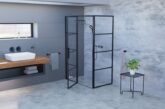
CCL Wetrooms explains the rules and regulations that apply to waterproofing.
Building regulations ensure that all types of bathrooms are designed to uphold health, safety and comfort. They also address other aspects of performance, such as serviceability.
Failure to adhere to these guidelines could result in the removal of a wet room and potential damages. The latest regulation changes place the onus on fitters of domestic wet areas to tank the space whether it’s a wet room or not.
In July 2018, the British Standards Institute (BSI) introduced changes in regulations for tiling in wet areas. Under the new revision, if you are tiling a wet area, a suitable tanking membrane should be fitted first.
Latest change: BS 5385-1:2018 clause 6.1.1.3
British Standards already support waterproofing in commercial wet areas. But under the new regulation, it is now recommended that domestic locations be waterproofed as well.
A wet area is considered to be any wet room, bathroom, shower area, steam room or any other location that is subjected to frequent water contact. This means that it isn’t just wet rooms that must have tanking membranes.
Tiles alone are not enough to stop water from getting through to the substrate. That’s why wet rooms have tanking membranes in the first place. Cementitious adhesives and grouts are not 100% waterproof. Over time, water is absorbed through the grout joints and adhesive bed, and then into underlying substrates.
If the substrate is unprotected, it can lead to damp and mould issues. The longer this goes untreated, the worse the damage becomes. Tiles can become de-bonded and the damage can even spread to adjoining rooms. The result is costly damage to properties.
With the new standards in place, contractors could be as accountable for repairs in domestic areas as they are for commercial locations.
Building Regulations that affect wet rooms & bathrooms
Design & build regulations
The Building Regulations Act 2010 provides guidance for compliance with building regulations for building work carried out in England.
Part A, section 1.3: Any structural work of composite steel and concrete must comply with general rules and rules for buildings. The same is the case for structural work of timber.
Section 1.6: Design of timber structures – including floors – should comply with common rules and rules for buildings.
Bathroom/shower room renovations
If you are renovating a bathroom and converting it into a wet room, it’s unlikely you’ll need to apply for building regulations approval. However, if you’re making significant structural changes, such as building an extension to accommodate a wet room, or adding additional fittings such as drainage, you will need to consult a building regulations officer before installation.
Part A, section 1.10: Structural appraisal of existing buildings for change of use.
Ventilation building regulations
When installing a wet room as part of a bathroom renovation, it should ideally need to be fitted with an electrical extractor fan vented outside. This can be connected to the light switch for timed operation, but continuous ventilation is preferred.
Part F: Ventilation systems must be installed and commissioned to a certain degree of accuracy to ensure appropriate airflow performance and energy efficiency.
Drainage regulations
Part H: All foul water drainage systems should have a large enough capacity to carry the expected water flow from the shower at any point. The size and gradients of the pipes should be adjusted to meet this capacity. All points of discharge into the system should be fitted with a water seal trap or approved alternative.
Electrical building regulations
Part P: No mains voltage may be fitted in a wet room. This includes electric shaving sockets as well as light switches and standard sockets.
All lights should be enclosed and mounted on the ceiling, with a pull cord switch installed for use. Alternatively, wall mounted light switches should be installed outside of the wet room.
Electric and gas heaters must be fixed at a safe distance from the shower area and a pull cord switch installed outside of the wet room is advised.
![]()







